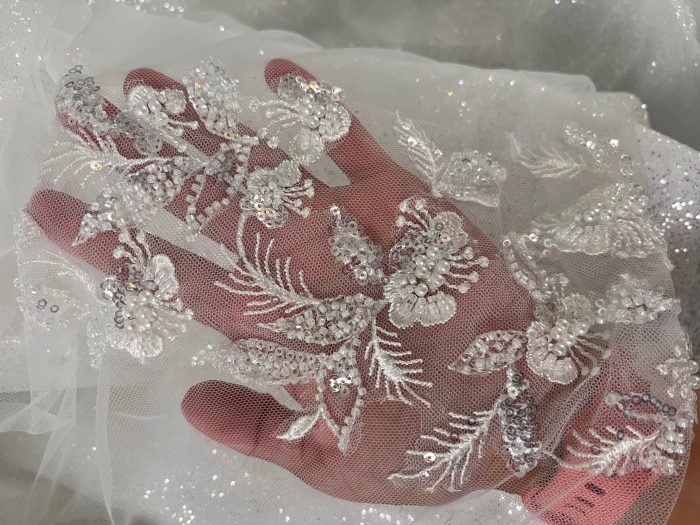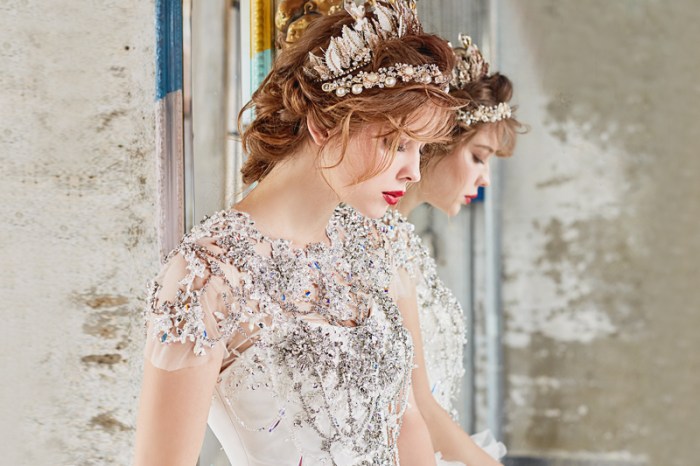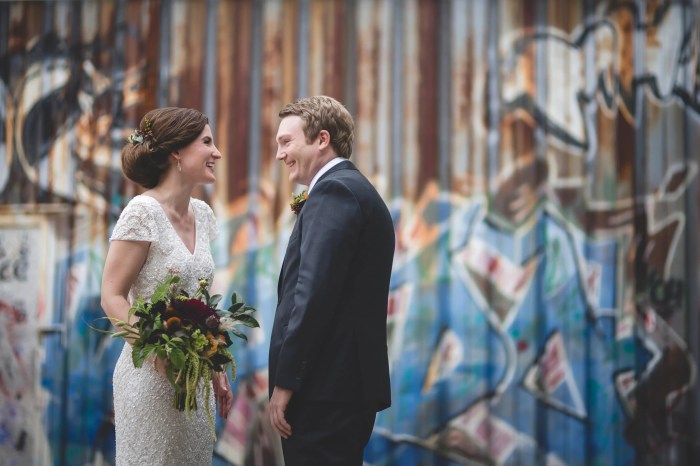Design Trends in Beaded Wedding Dress Sleeves
Beaded wedding dress sleeves have undergone a significant evolution over the past decade, reflecting broader fashion trends and advancements in beading techniques. From subtle embellishments to dramatic statement pieces, beaded sleeves offer a versatile way to personalize a bridal look. This section will explore the key trends shaping contemporary designs.
Evolution of Beaded Wedding Dress Sleeve Styles
The past decade has witnessed a shift from heavily beaded, often vintage-inspired sleeves to more modern, minimalist approaches. Early trends favored densely beaded, long sleeves, often in classic pearl or crystal designs. More recently, there’s been a move towards strategically placed beading, incorporating negative space and highlighting specific design elements. This allows for a more contemporary and less overwhelming look, even with elaborate beadwork.
Current Trends in Beading Techniques
Three prominent trends currently define beaded wedding dress sleeve designs. First, the use of mixed beading techniques, combining embroidery, appliqué, and hand-sewing to create intricate textures and visual depth. Second, the incorporation of unconventional bead shapes and sizes, moving beyond traditional round beads to include geometric shapes, sequins, and other embellishments. Finally, the rise of sustainable and ethically sourced beads is gaining traction, with designers increasingly focusing on eco-friendly materials and production methods.
Comparison of Bead Colors and Sizes
The choice of bead color and size significantly impacts the overall aesthetic. Smaller, delicately placed beads create a subtle shimmer, while larger beads add a bolder statement. Color choices range from classic ivory and pearl tones to vibrant jewel tones and metallic finishes. Silver and gold beads remain popular choices for their versatility, while bolder colors can be used to create a more dramatic effect, particularly when paired with contrasting fabrics or sleeve designs.
Sleeve Lengths and Beading Patterns
| Sleeve Length | Bead Type | Bead Color | Style Description |
|---|---|---|---|
| Short Puff | Seed Beads, Pearls | Ivory, Silver | Romantic, delicate beading pattern creating a subtle shimmer. |
| Elbow Length | Crystal, Sequins | Champagne, Gold | Elegant, strategically placed crystals and sequins for a glamorous effect. |
| Three-Quarter Length | Glass Beads, Pearls | Silver, Clear | Modern, cascading bead pattern for a sophisticated and refined look. |
| Long Sleeves | Seed Beads, Pearls | Ivory, Pearl | Classic, densely beaded sleeves for a traditional and luxurious feel. |
Materials and Techniques
The artistry of beaded wedding dress sleeves lies in the careful selection of materials and the precision of the beading techniques. The choice of beads and the method of application significantly influence the final look and feel of the garment. This section details the common materials and techniques involved.
Types of Beads
Several bead types are commonly used, each with its unique properties: glass beads offer versatility in color and shape; pearls lend a classic, elegant touch; crystals provide exceptional sparkle and light refraction. The choice often depends on the desired aesthetic and the overall design of the dress.
Beading Techniques
Several beading techniques are employed, including embroidery, appliqué, and hand-sewing. Embroidery involves stitching beads directly onto the fabric, allowing for intricate patterns and designs. Appliqué involves attaching pre-made beaded motifs to the fabric, offering a faster method for larger areas. Hand-sewing offers precise placement and control over individual beads, ideal for delicate work.
Impact of Bead Placement and Density

Source: bridesandtailor.com
The placement and density of beads significantly impact the aesthetic. Sparse beading creates a delicate, understated look, while dense beading produces a more dramatic, opulent effect. Strategic bead placement can highlight specific design elements, such as the seams or the hemline, adding visual interest and depth.
Fabric and Beading Interaction
- Lace fabrics pair well with delicate beading, creating a romantic and ethereal effect.
- Silk fabrics complement both subtle and dramatic beading, showcasing the beads’ luster and the fabric’s fluidity.
- Tulle fabrics provide a light and airy base for beading, allowing the beads to take center stage.
- Heavy fabrics like brocade might require less dense beading to avoid overwhelming the garment’s texture.
Bridal Style and Beaded Sleeves
Beaded sleeves are incredibly versatile, complementing a wide range of wedding dress silhouettes and necklines. The key lies in choosing the right beading style and placement to enhance the overall design and create a cohesive look. This section explores how beaded sleeves can be used to complement various bridal styles.
Beaded Sleeves and Dress Silhouettes
A-line dresses pair well with various sleeve lengths and beading styles. Mermaid and fit-and-flare silhouettes often benefit from more elaborate, statement sleeves, while ballgown dresses can be enhanced with delicate or moderately beaded sleeves to balance the volume of the skirt.
Beaded wedding dress sleeves offer a touch of elegant sparkle, perfectly complementing a variety of wedding dress styles. If you’re searching for the perfect dress, consider checking out the beautiful selection of women’s Macy’s dresses for wedding available at women’s Macy’s dresses for wedding to find the ideal base for your beaded sleeves. Ultimately, the right combination will create a stunning and memorable bridal look.
Beaded Sleeves and Necklines

Source: praisewedding.com
Sweetheart necklines often complement delicate, shorter sleeves, while halter necklines pair well with more minimalist or strategically beaded designs. Off-the-shoulder necklines offer opportunities for elaborate sleeves that add visual interest without overwhelming the neckline.
Beaded Sleeve Variations for a Sheath Dress
Consider a sheath dress as a base. Three beaded sleeve variations could include:
- Variation 1: Delicate seed bead embroidery along the sleeve hem, creating a subtle shimmer and emphasizing the clean lines of the dress.
- Variation 2: Strategically placed crystal embellishments along the sleeve cuffs, adding a touch of glamour and sophistication.
- Variation 3: A mix of pearls and sequins in a cascading pattern down the entire sleeve, creating a dramatic and eye-catching effect.
Visual Representation and Descriptions
The visual impact of beaded wedding dress sleeves is multifaceted, influenced by bead color, material, and the interplay of light and texture. This section delves into the visual aspects of different beaded sleeve designs.
Visual Impact of Bead Colors
Silver beads create a classic, elegant look, reflecting light beautifully. Gold beads add a touch of luxury and warmth. Ivory beads offer a subtle, romantic shimmer, blending seamlessly with many dress colors. The choice of color significantly influences the overall mood and style of the dress.
Light Interaction with Bead Materials
Matte beads provide a softer, more understated look, while glossy beads create a more dramatic and eye-catching shimmer. Crystals, in particular, exhibit exceptional light refraction, creating a dazzling effect. The interplay of light and bead finish is crucial in achieving the desired visual impact.
Distinct Beaded Sleeve Designs, Beaded wedding dress sleeves
Design 1: Long, flowing sleeves adorned with delicate pearl embroidery. The pearls create a soft, romantic glow, enhancing the ethereal quality of the dress.
Design 2: Short puff sleeves embellished with densely packed sequins and crystals. This design creates a bold, glamorous statement, perfect for a modern bride.
Design 3: Elbow-length sleeves featuring a mix of glass beads and delicate metallic threads. This design combines texture and shine, creating a sophisticated and unique look.
Care and Maintenance: Beaded Wedding Dress Sleeves

Source: xogrp.com
Proper care and maintenance are crucial to preserving the beauty and integrity of beaded wedding dress sleeves. This section offers guidance on cleaning, storage, and addressing potential challenges.
Cleaning and Care
Professional dry cleaning is recommended for beaded wedding dresses to prevent damage to the beads and fabric. Avoid harsh chemicals and abrasive materials. Gentle brushing can remove surface dust and debris.
Maintaining Integrity
Potential challenges include loose or lost beads, especially with delicate embroidery. Regular inspection and gentle repair by a professional seamstress can address these issues. Avoid pulling or tugging on the beads.
Storage Methods
Store the dress in a breathable garment bag in a cool, dry place, away from direct sunlight and moisture. Avoid storing it in a plastic bag, which can trap moisture and damage the beads and fabric. Consider using acid-free tissue paper to cushion the sleeves and prevent creasing.
Question Bank
How do I clean beaded wedding dress sleeves?
Dry cleaning is generally recommended. Always check the care instructions on the dress’s label before attempting any cleaning.
Can I remove beads from my wedding dress sleeves?
It’s not recommended unless you’re a skilled seamstress. Removing beads can damage the fabric and potentially ruin the garment.
How do I store a beaded wedding dress to protect the sleeves?
Store the dress in a breathable garment bag in a cool, dry place, away from direct sunlight. Avoid using cedar or mothballs, which can damage the beads.
What types of beads are most durable for wedding dress sleeves?
Glass and crystal beads are generally more durable than pearls, which can be more prone to chipping or scratching.
Are beaded wedding dress sleeves suitable for all body types?
Yes, but the style and beading density should be considered. Subtle beading can flatter most figures, while heavier beading might be more suitable for certain silhouettes.